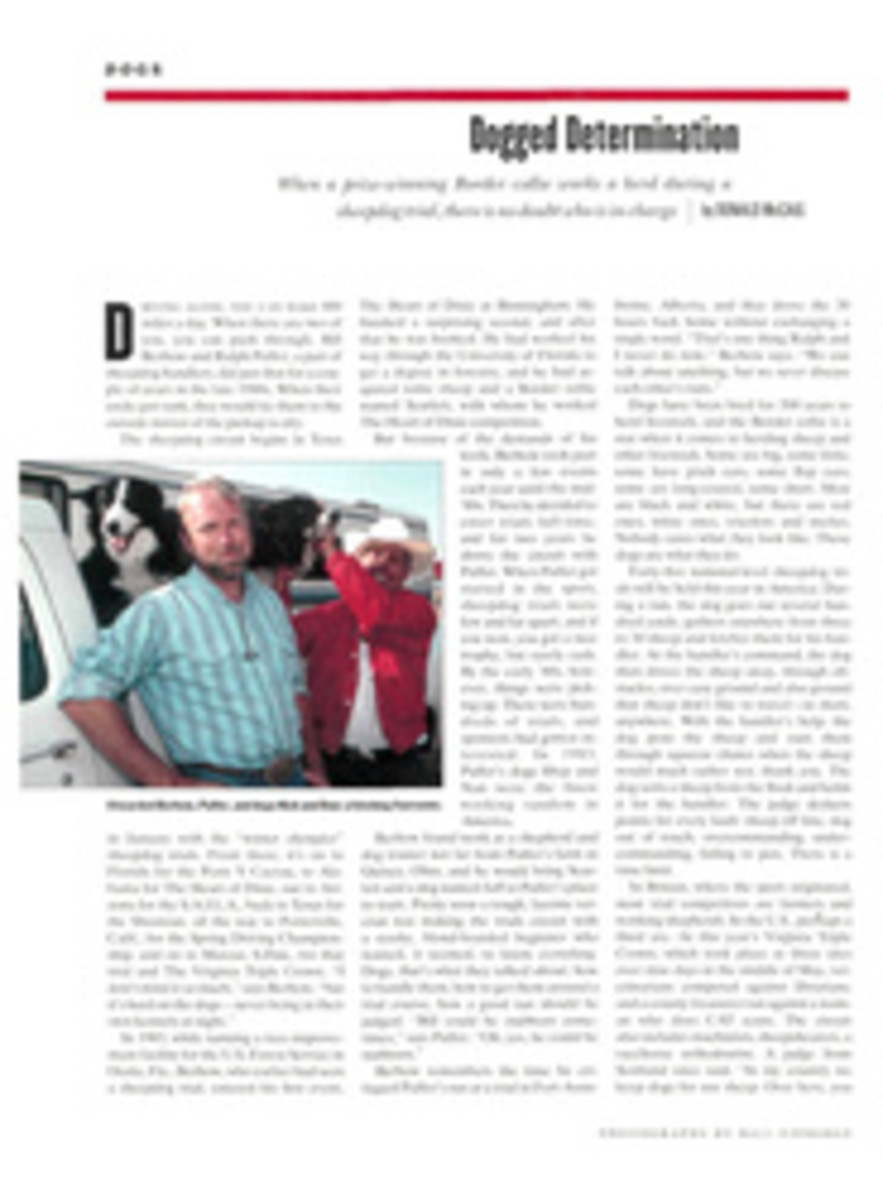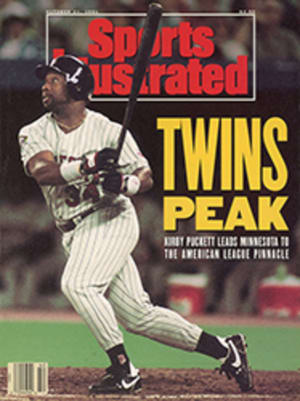
Go, Granny, Go!
In the pits at the 1991 international Hot Rod Association Spring Nationals at Bristol (Tenn.) International Dragway, a young wannabe goes through a familiar ritual. The 10-year-old asks one of the IHRA drag racers to autograph a cap. But this time the request has a twist. The fan is a 10-year-old girl, and her idol is an older woman—a much older woman. In fact, she's a great-grandmother. She is Cleo Chandler, 76, of Anniston, Ala., and last year she finished eighth in the point standings for IHRA's stock-eliminator division, ahead of 65 men, most of whom were less than half her age.
"Stick with it," Chandler tells the youngster as she signs the cap. "And don't wait as long as I did to get started."
That's good advice. Chandler didn't reach the staging area until she was 68. If she had started her career sooner, she says, she would certainly be rocketing down the track in a nitro-burning, supercharged dragster instead of in this souped-up Chevy. Still, she's thankful for what she has got. This cool, collected senior citizen is the IHRA's oldest circuit racer, and she and her 42-year-old son, Ed, who crews for-her most weekends, are the association's only mother-and-son duo.
The IHRA, a 21-year-old circuit operating in the eastern half of the country, is often overshadowed by the National Hot Rod Association, drag racing's oldest and largest sanctioning body. The IHRA has only half as many members (36,000) and drag strips (80) as the NHRA does, and it is viewed by many racers as a small, fun, friendly, even family-oriented hot rod organization. In other words, it's the perfect scene for Cleo and Ed.
Ed started racing at 16, and one year he won three IHRA races in the Top Sportsmen class. In 1983 he and his mom were standing in the pits at the Sylacauga (Ala.) Dragway, watching a driver disqualify himself by red-lighting (leaving a fraction of a second too early). Ed overheard his mother say, "I could do better than that." So that Christmas, Ed presented Cleo with a '65 Chevy Malibu, her first "muscle car."
"It was more of a joke," says Ed. "I thought she'd make one or two runs, but I should have known better. Mom's never been a quitter. After her first race, she was hooked."
A career housewife, mother of four and a widow since 1978, Cleo has always had an adventurous streak. Biking, roller-skating and even surfing behind a powerboat are some of her past avocations. So when she climbed into the car at her first race in 1984, her heart was pounding with excitement, but not with fear.
Ed signaled for her to do a burnout, and Cleo shifted her automatic into low gear and stomped on the gas pedal. Immediately, the fat rear tires spun and smoked in the inch-deep water puddle. This maneuver makes even the most pedestrian of cars look like fire-breathing monsters as they heat the tire rubber to gain a better grip on the asphalt. After the burnout, Cleo brought the Chevy slowly toward the start line. She revved the engine to 6,500 rpm. When she saw the last yellow of the starting lights Hash, she released the front-brake lock. The car lurched forward and zoomed straight down the eighth-of-a-mile track, roaring and squealing.
Cleo lost that first run but soon began winning races at independent tracks throughout Alabama. Ed saw that she was getting a big kick out of racing, so he built her a new car, a '65 Malibu automatic with a hot-rodded, 327-cubic-inch V-8. Ed christened it "Mom's Toy."
Most people were astonished at her near instant success, but Cleo was unfazed. As a fan of Ed's, she had been cutting lights (practicing starts) for years from the bleachers, punching down her thumb on the grandstand railing a split second before the green light flashed. She was quick at the trigger even before she climbed into a car, and these finely tuned reflexes have become the hallmark of her driving.
Drag racing is elemental in the extreme: Two cars accelerate down the track against one another. The first one to reach the finish gets to race again; the other one gets packed up and carted home. The game begins as the cars inch up to the starting line. The staging lights atop the Christmas tree (the tiers of starting lights) Hash, indicating that all is set for a race to begin. Then, three pairs of yellow lights blink on and off in rapid succession. These are followed by a green light. If you leave before the green comes on, a red flashes and you're disqualified. If you leave just as the green blinks, you've got a "hole shot" and a chance to win. If you leave the slightest bit late, you've probably blown it. You're going to be "put on the trailer" by the other driver.
Cutting a light just right without triggering the red is a formidable challenge. There is .5 of a second between each light, for a total of 1.5 seconds between the first yellow and the green; the quality of a driver's start is measured in the amount of time that elapses after the last yellow light. For instance, a perfect start is scored .500. Cleo regularly turns in starts under .540. At one meet last spring, she cut four lights under .516. "She's got fantastic reflexes," says Danny Carr, a two-time IHRA world champion. "She cuts more double-zero times than anyone I've ever seen." This assessment comes from a man who, when he first saw an elderly, white-haired lady pull her Chevy up to the line in the lane next to him, thought: Now, there's someone I can pick on.
Even as the great-grandma from Alabama used her fast starts to build a reputation on short, local tracks in the mid-'80s, she was setting her sights on bigger trophies. Three years ago she drove her first quarter-mile race. Soon she was able to push her Malibu to more than 100 mph in slightly less than 13 seconds. In 1988, Cleo, with Ed crewing, began touring on the IHRA's March-to-October weekend circuit. Last year the two put nearly 20,000 miles on the odometer of their truck, a Chevy one-ton car hauler.
Cleo's best campaign was in 1990, her eighth-place ranking securing her the last berth in the season-ending $5,000 Lunati Cams Stock Shootout, which is part of the Fall Nationals in Bristol. In her quarterfinal matchup, Cleo floored Mom's Toy and narrowly out-carred Carr in the quarter-mile race. In the semifinals, she cut a perfect .500 light to defeat 1985 IHRA stock-eliminator champion Ray Head. Cleo then beat the newly crowned season champ, Bill Howell, in the finals to win $5,000, her biggest racing paycheck.
With one race to go on the 1991 tour, Cleo stood in 16th place on the IHRA ladder. Her best finish this year was a quarterfinal appearance at the Carolina Dragway in Jackson, S.C., on Sept. 15. "I've done pretty good," says Cleo, "but not as well as last year. My car hasn't been as consistent."
Whatever good performances she has had, she has earned; Granny is not treated as a charity case on the circuit. Randall Campbell, 1990 runner-up in the stock-eliminator class, is precisely half her age, but he never lets this influence his driving. He'll give her a hug when her rig pulls into the pits, but says, "I don't consider her age when I pull up against her. Cleo's as tough as any other driver I race against. She's easily good enough to be world champion someday."
Whether or not she becomes world champ, she has already had the opportunity to drive in other parts of the world. Immediately after her win at the '90 shootout, a track operator from Aruba offered her an all-expenses-paid trip to compete last November in his country. Cleo was one of six U.S. drivers in the field of 84 at the off-season event. Although she got as far as the semifinals in only one of the three events she entered, she became a celebrity throughout Aruba nevertheless. She received long standing ovations every day at the drag strip, and was even asked to appear on Aruba television.
The applause was welcome, but nothing new. Once, after she had lost at Bristol in 1990, she was coaxed into a walk down the start line. Sixty thousand spectators, drag-racing legend Don Garlits among them, stood and cheered.
"All the racers and track officials love her." says Ted Jones, the IHRA's former general manager and vice-president. "And she's just one heck of a driver."
Because of this last fact, Cleo continues to race. Some of her senior citizen friends encourage her to "go for it," but others, quite frankly, tell her that she's "acting crazy." Cleo takes her advice from the former group. "I want to race until I'm 100," she says. "I probably can't, but I am going to try for 100."
PHOTO
BILL BALLENBERG
On weekends Cleo puts her foot down and sends a message: Don't toy with Mom.
PHOTO
BILL BALLENBERG
Cleo's '65 Malibu, with its 327-cubic-inch V-8, was customized by her dutiful son Ed.
Karen Karvonen is a free-lance writer who lives in Denver. This is her first story for SI.

